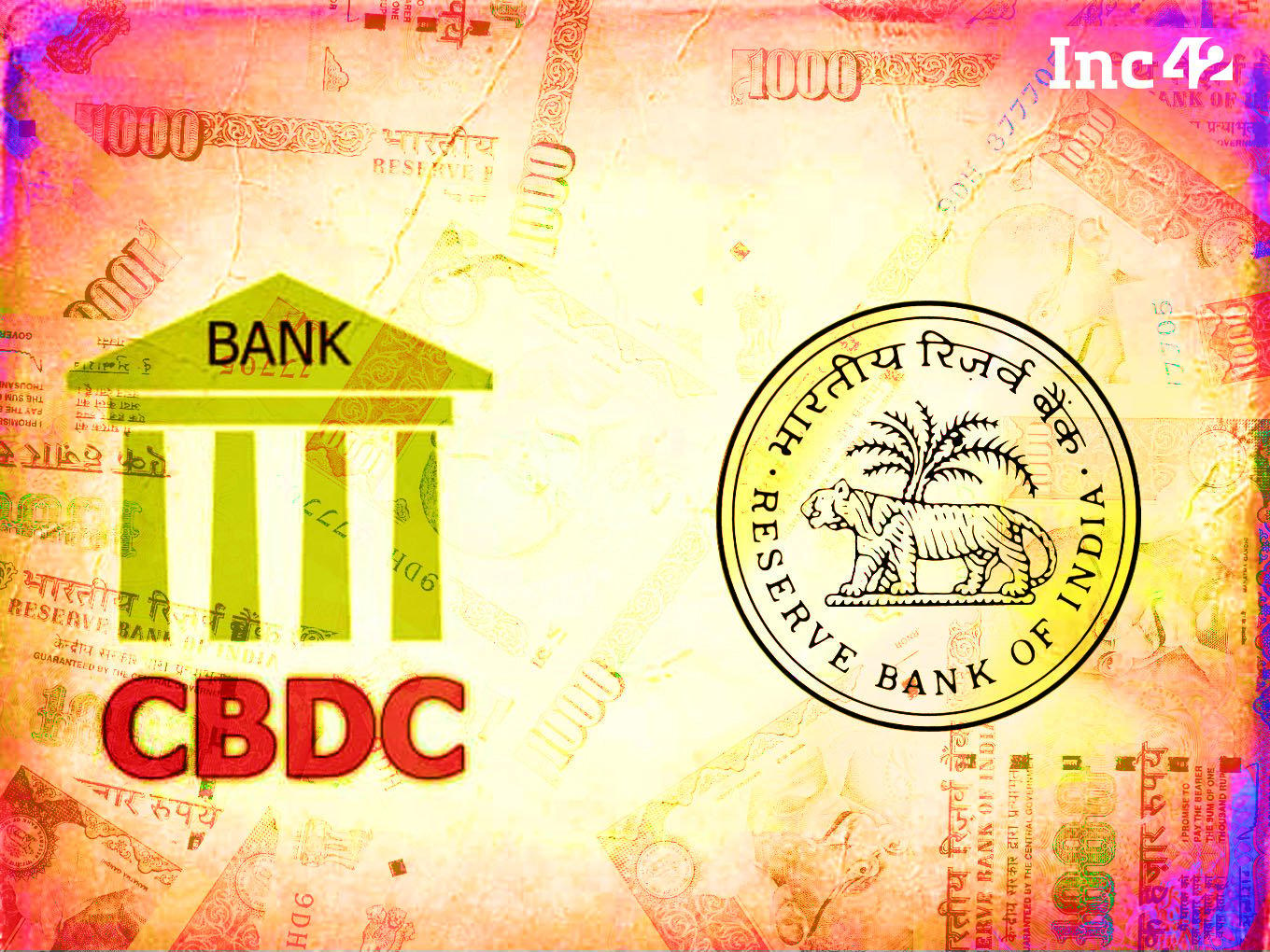The RBI is mulling to adopt a hybrid model consisting of both account-based and token-based CBDC
The central bank has published a concept note on CBDC and is expected to publish a detailed policy paper by December, 2022
CBDC will help reduce the cost of importing note paper, printing cash and circulating across the country, according to experts
The Reserve Bank of India (RBI) plans to launch the pilot for the Central Bank Digital Currency (CBDC) later this year, and has asked at least four public sector banks to carry out the trial.
In line with the foundational principles laid down by the Bank for International Settlements, the RBI has published a concept note and is expected to publish a policy paper later by December 2022.
According to the US-based think-tank The Atlantic Council, 105 countries, representing over 95% of global GDP, are exploring CBDCs, out of which 50 countries are in an advanced phase of exploration (development, pilot, or launch).
So far, 11 countries, mostly smaller ones like Bahamas and Jamaica, have launched CBDCs, while 15 countries, including China, UAE, South Korea and Singapore, are piloting their CBDCs and preparing for complete launches.
Why India Should Launch CBDC
Many fintech experts have questioned the need for CBDC, considering that India has consistently topped in terms of digital transactions. While wholesale payments are mostly digital in the country, digital transactions for retail payments too have also grown exponentially over the last few years, thanks to UPI.
Responding to this, Ram Rastogi, Chairman-Governing Council, Fintech Association For Consumer Empowerment (FACE) and former Head of Product, NPCI said, “CBDC is the future. Cash to GDP ratio still peaks at 14.5%. Further, as cryptocurrencies are fast becoming a new culture of transactions, we need to have our own digital currency not just to mitigate the expenses on currency printing, but create a new paradigm with 5G and CBDC.”
Besides, CBDC is also needed as someone needs to fight against the dollar’s hegemony, Rastogi added.
Meanwhile, Prasanna Lohar, CEO of Block Stack and cofounder of India Blockchain Forum, said, “The Indian banking sector is one of the largest networks of banks in the world, catering to more than 80% of India’s population. It consists of 18 public sector banks, 22 private sector banks, 46 foreign banks, 56 regional rural banks, 1,542 urban cooperative banks, and 94,384 rural cooperative banks. A general-purpose CBDC has the potential to disrupt this intermediary network.”
Why India Needs Its Own CBDC
- CBDC will reduce the cost of importing note paper, printing cash and circulating across the country
- It is more effective in preventing, crime, money laundering and financing terrorism. Blockchain-based CBDC will be able to trace all transactions, unlike the current system of mobile wallets offered by private companies
- CBDCs are a form of smart contracts and can be designed to automatically collect taxes
- CBDCs can also be availed by those who don’t have access to smartphones and is more financially inclusive
- It can lower the cost of cross-border transactions
The Challenges Ahead
“If CBDCs are designed prudently, they can potentially offer more resilience, more safety, greater availability, and lower costs than private forms of digital money. That is clearly the case when compared to unbacked crypto assets that are inherently volatile. And even the better managed and regulated stable coins may not be quite a match against a stable and well‑designed central bank digital currency,” Lohar said about the benefits of CBDC.
However, the RBI may have to address a number of issues in order to come up with a well-designed CBDC. While the RBI has discussed most of these points in its concept note, it remains to see how the central bank addresses these issues going forward:
- The validation mechanism: While account-based CBDC may suit wholesale CBDC applications, the token-based approach suits the retail needs at the scale that the Indian market requires. While RBI has discussed all the available options, experts believe India may take a hybrid approach down the line.
- Degree of anonymity: There have been a lot of debates about the ways in which CBDC would impact privacy. A banker who was earlier associated with the project said, “The RBI’s thoughts are very clear. For lower transactions, extend the maximum degree of privacy i.e. wallets with smaller limits will not ask for many personal details, but for advanced wallets, probably all the personal details will be required to fill in.” Lohar, on the other hand, believes that CBDC will offer more privacy.
- Addressing cybersecurity: Irrespective of whether CBDC is a centralised ledger or decentralised, counterfeiting and cybersecurity will remain the key concerns to address.
- Making people shift to CBDC: Rastogi believes that making people aware of CBDC could be a huge challenge. “For retail, the government had earlier launched e-rupee tokens through NPCI. It is still evolving,” he said, adding that the central bank must think in advance about frictionless conversion of CBDC into cash across the country.
- Technical challenges: While Jio and Airtel have launched 5G in some cities, a large section of rural India still faces connectivity issues which may create issues for CBDC. Besides, interoperability with the existing systems is another challenge which the RBI will have to address.
According to sources close to the development, the RBI is currently considering adopting a hybrid architecture with two components – a direct model with account-based CBDC could be applicable for wholesale needs, while an indirect model with token-based CBDC can be implemented for retail requirements.
The sources added that India is in no hurry to launch CBDC. The RBI will start the pilot launch with the direct model first, and both the components will be gradually launched for pilot testing for a duration of at least 18 months.
































 Ad-lite browsing experience
Ad-lite browsing experience